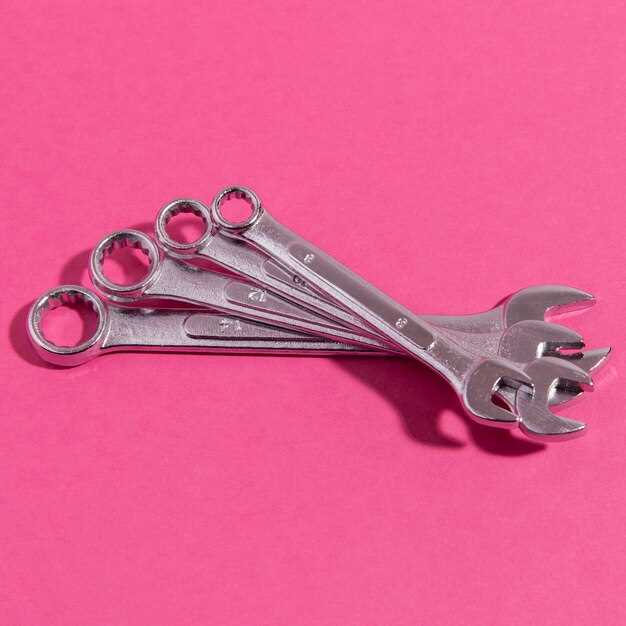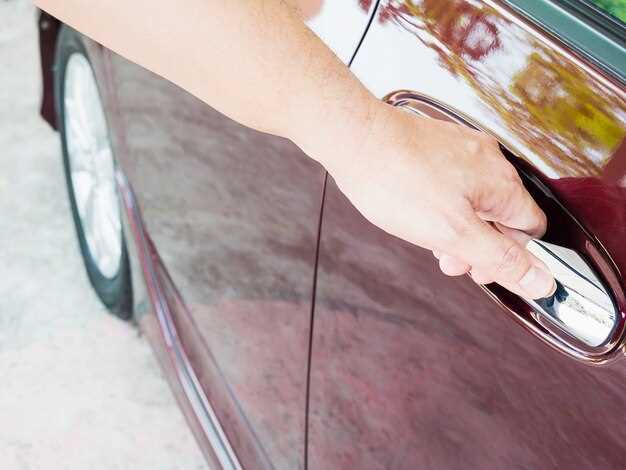If you’re serious about tackling automotive projects yourself, investing in the right tools will significantly enhance your experience and results. Begin with a quality socket set that includes both metric and SAE sizes. This versatile collection enables you to handle a wide variety of tasks, from simple repairs to more complex overhauls. Opt for a set that features a ratcheting mechanism for quick and efficient work.
Next on your list should be a sturdy set of wrenches. A combination wrench set combines open-ended designs with closed sockets for maximum utility. Look for wrenches with a non-slip grip, as it allows for comfortable handling, especially in tight spaces. Protect your hands with a good pair of mechanic gloves that provide both dexterity and durability.
Don’t overlook the importance of a reliable jack and jack stands. A hydraulic floor jack is quick and can lift heavy vehicles, while jack stands ensure safety during any work that requires you to be under the car. Always prioritize safety by choosing high-quality equipment capable of supporting your vehicle securely.
Include a screwdriver set with a range of sizes and types, including flathead and Phillips, to tackle various fasteners. A magnetic tip can help you retrieve screws that may fall into hard-to-reach places. Lastly, a multimeter is invaluable for diagnosing electrical issues, making it easier to troubleshoot problems effectively.
Choosing the Right Socket Set for Your Vehicle
Select a socket set that matches your vehicle’s specific needs. Look for a set that includes both standard and metric sizes, as many vehicles use a mix of both types of fasteners. A 1/4-inch drive is perfect for smaller tasks, while a 3/8-inch or 1/2-inch drive provides more torque for tougher jobs.
Consider the socket material. Chrome vanadium and chrome molybdenum are durable choices that resist rust and corrosion. Check for a set with a ratchet that has a 72-tooth gear; this allows for better control in tight spots.
Verify the set’s range covers both deep and shallow sockets. Deep sockets are essential for reaching bolts in recessed areas, while shallow sockets work well for exposed fasteners. Some sets come with universal joints or extensions, which enhance flexibility and access to hard-to-reach spots.
Check for a sturdy storage solution. A well-organized case helps keep your sockets in order and prevents loss. Magnetic or clip-style holders can help secure the sockets during transport.
Review customer feedback for insights into the set’s performance and durability. A good warranty can provide additional reassurance about the product’s longevity. Investing in a quality socket set pays off as it makes your DIY repairs faster and easier, keeping your vehicle running smoothly.
How to Select the Best Torque Wrench for Accurate Tightening
Choose a torque wrench by first considering the type. Click type wrenches provide an audible click at the preset torque, which helps ensure precision. Beam type wrenches display torque measurement with a scale, offering simplicity and reliability. Digital torque wrenches provide electronic readouts and often include features like preset settings and memory storage for multiple torque values.
Next, assess the torque range. A good wrench covers a wide range to accommodate various tasks, typically from 10 to 150 ft-lbs. Make sure it suits your common projects.
Look for accuracy, ideally ±4% or better. Check the manufacturer’s specifications for this detail. Calibration is important, so consider wrenches that can be recalibrated easily.
Handle comfort matters too. A rubber or textured grip can enhance handling, particularly during extended use. The wrench should feel balanced and provide good leverage.
Finally, review customer feedback. Look for insights on durability and ease of use. A well-rated wrench often reflects real-world performance.
| Type | Pros | Cons |
|---|---|---|
| Click Type | Audible indication, easy to use | Can be damaged if over-torqued |
| Beam Type | Simple, no battery needed | Requires user to align scale and pointer |
| Digital Type | Easy to read, memory settings | Battery-dependent, may be less durable |
Understanding Different Types of Screwdrivers and Their Uses
To choose the right screwdriver, identify the screw type first. Here’s a breakdown of common screwdriver types and their applications:
- Flathead (Slotted) Screwdriver: Best for screws with a straight, horizontal groove. Ideal for simple tasks, such as opening paint cans or tightening screw terminals.
- Phillips Screwdriver: Designed for cross-shaped screws. It provides better grip and torque. Use it for assembling furniture and installing cabinets.
- Torx Screwdriver: Features a star-shaped socket. Excellent for automotive and electronic applications, where increased torque and reduced cam-out are needed.
- Hex (Allen) Screwdriver: Perfect for hexagonal socket screws. Commonly used in bicycles, furniture assembly, and machinery adjustments.
- Robertson (Square) Screwdriver: Recognized by its square-shaped head. It offers excellent torque and is commonly found in woodworking and construction projects.
Mix and match screwdrivers according to the tasks. Keep a variety in your toolkit, as different jobs require different screw types. Invest in high-quality screwdrivers to ensure durability and performance.
Additionally, consider two-in-one or multi-bit screwdrivers. These can save space and are convenient for quick fixes. Always pay attention to the size of the screwdriver tip; a proper fit prevents damaging the screw head.
For precise work, such as electronics or intricate models, use precision screwdrivers. Look for sets that include various sizes and types. This will cover a range of small screws without compromising quality.
In summary, knowing the types of screwdrivers and their specific uses enhances your DIY skills and makes every project smoother.
Essential Features to Look for in a Mechanic’s Creeper
Opt for a creeper with a sturdy frame. This ensures durability, allowing you to work safely under vehicles without worrying about structural failures. Look for steel or high-quality plastic materials that can withstand the weight of both the mechanic and the car.
Check the padding of the creeper. A comfortable padded surface provides support during long hours of work. Choose a creeper with thick, high-density foam, as it will minimize discomfort and fatigue.
Wheels matter. Select a creeper with smooth-rolling casters that can swivel 360 degrees. This feature enhances maneuverability, letting you easily slide in and out from under different vehicles without straining.
Consider a creeper with adjustable height. Models with this feature accommodate various working conditions, allowing easy access to the undercarriage of cars at different elevations.
Look for built-in tool trays or storage compartments. These keep your tools organized and within reach, preventing unnecessary movement while working under the vehicle. It makes your tasks more streamlined and efficient.
Lastly, pay attention to the creeper’s construction design. Some models offer a low-profile design to easily slide under vehicles with low ground clearance. Ensure your chosen creeper fits the specific needs of the vehicles you work on.
Selecting the Perfect Multimeter for Automotive Diagnostics
Choose a multimeter that offers auto-ranging capabilities. This feature simplifies readings by automatically adjusting the measurement range, saving time and effort when diagnosing electrical issues.
Look for a model with a high input impedance, ideally above 10 MΩ. This specification minimizes the load on the circuit being tested, providing more accurate voltage measurements and preventing interference with sensitive components.
Ensure that the multimeter includes a reliable capacitance measurement function. This is particularly useful for testing capacitors in automotive systems, allowing you to evaluate their condition without the need for additional tools.
Opt for a multimeter with a true RMS (Root Mean Square) capability. True RMS meters provide accurate voltage and current readings, especially in circuits with non-linear loads, such as modern vehicles equipped with electronic systems.
A backlit display is advantageous; it enhances visibility in dimly lit environments, making it easier to read measurements when working in tight spaces under a hood.
Prioritize durability. Choose a multimeter designed for automotive use, often featuring reinforced housing and rubberized grips to withstand drops and rough handling.
Consider models that include additional probes and accessories, such as temperature probes. This versatility expands your diagnostic capabilities, allowing you to troubleshoot a wider range of automotive electrical issues.
Finally, check for user reviews and choose a brand known for reliability and support. A well-reviewed multimeter can save you time and reduce the likelihood of errors during diagnostics.
Building Your Safety Gear: What Every DIY Mechanic Needs
Your first purchase should be a quality pair of safety glasses. Opt for impact-resistant lenses to protect against flying debris. Look for models that fit snugly to avoid slippage during use.
Next, invest in a durable pair of gloves. Choose mechanic gloves that offer good grip while allowing dexterity. Materials like synthetic leather or Kevlar provide protection against abrasions and cuts.
Don’t overlook the importance of a comfortable pair of work boots. Select steel-toed boots to safeguard your feet from heavy objects. Look for slip-resistant soles to navigate your workspace safely.
A reliable set of ear protection is a must. Opt for earmuffs or earplugs to shield your hearing from loud machinery and tools. Aim for devices that balance comfort with effective noise reduction.
Consider wearing a respirator or mask, especially when working with chemicals or paints. Choose a model that fits properly and has replaceable filters to ensure safety from harmful fumes.
Finally, incorporate high-visibility clothing into your gear. Bright colors and reflective materials enhance your visibility, especially in dimly lit environments or when working near traffic.
Assemble these items into your safety kit, making them readily accessible. Prioritize your safety to enhance your DIY experience and keep hazards at bay.







